Gombrich observed that ‘every picture owes more to other pictures painted before than it owes to nature’[1]. Designers and artists have often looked to the past for inspiration and ornament prints from all periods can be an unparalleled resource in this exercise. Last year, the Fondazione Giorgio Cini held an exhibition that included contemporary decorative objects created from designs found in some of Giovanni Battista Piranesi’s (1720-1778) 18th-century ornament prints, thereby realising some of the artist’s most fantastic schemes over 200 years after they were first devised. The results, in three-dimensional form and many on a monumental scale, are extraordinarily beautiful and like witnessing a dream come to life.[2].
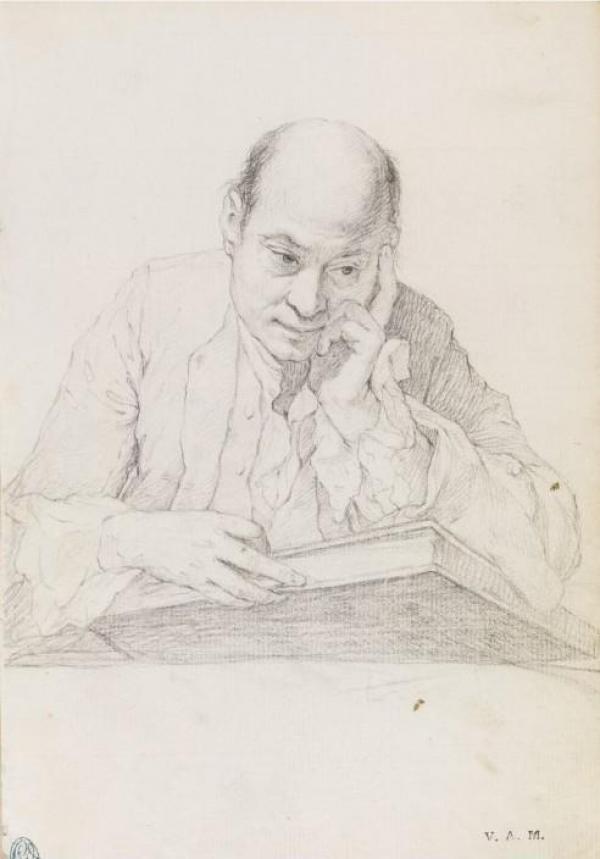
A late 18th-century chalk drawing by Angelica Kauffman, thought to be a portrait
One of the V&A’s ornament prints by Piranesi:
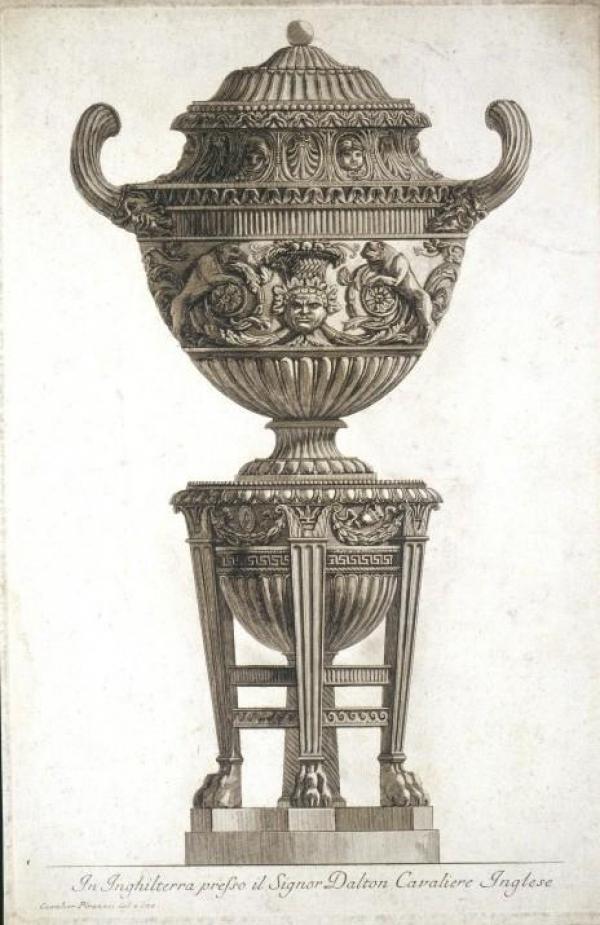
Plate from Piranesi’s ‘Vasi, candelabri, cippi, sarcofogi, 1778. V&A:E.1527A/239
A design for a vase from Piranesi’s Vasi, candelabri, cippi, sarcofagi, tripodi, lucerne, ed ornamenti antichi, published in Rome, 1778. V&A:E.1527A/239.
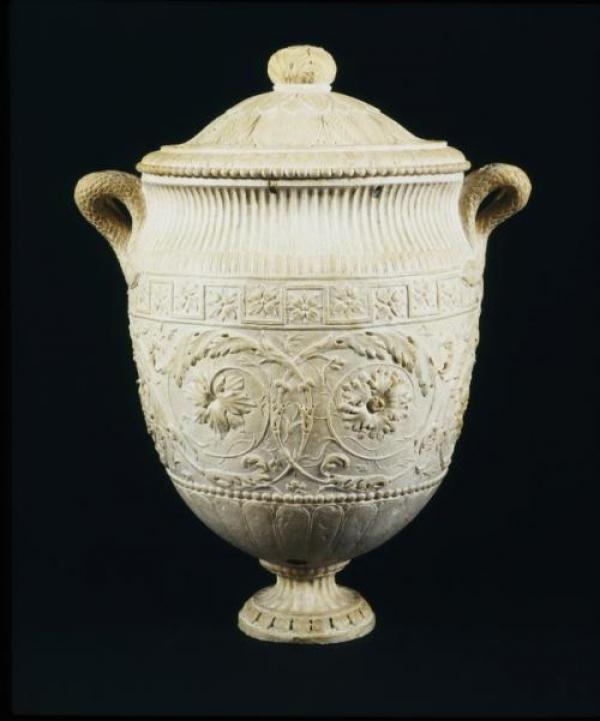
Marble vase designed by Piranesi. V&A:3348&A-1856
A marble vase designed by Piranesi and produced in his Roman workshop c. 1770-78. V&A:3348&A-1856
A contemporary artist who has made explicit use of ornament prints in his work is Anton Würth[3]. The German book artist and printmaker has produced several suites of engravings that recall the sophisticated designs created by ornamentalists for baroque gold and silversmiths. His spare oval forms suggest the contours of snuffboxes and decorative medallions, while his floating patterns of foliate scrolls and arabesques evoke the enamelled and finely-chased motifs found on many 17th-century and early 18th-century objets de vertu.
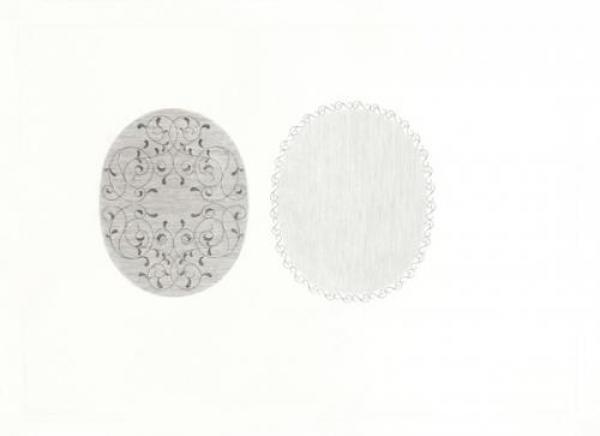
Anton Würth, Vorlageblatt, 2010. Anton Würth/C.G. Boerner, LLC
Anton Würth, Vorlageblatt, engraving on wove paper, 2010. Anton Würth/C.G. Boerner, LLC
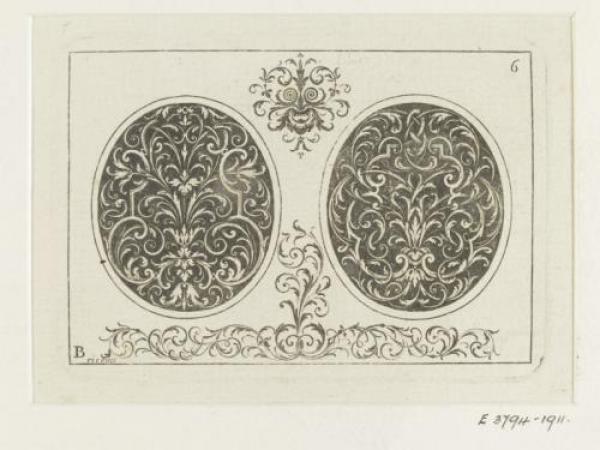
Briceau, plate from a suite of 8 designs for goldsmiths, Paris, 1709. V&A:E.3794-1911.
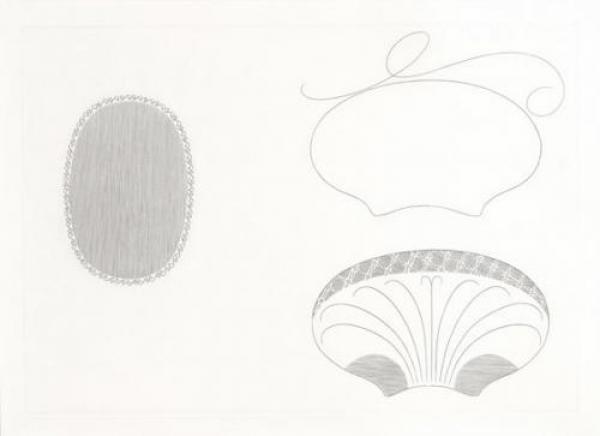
Anton Würth, ‘neun Vorlageblätter V5’, 2010. Anton Würth/C.G. Boerner, LLC
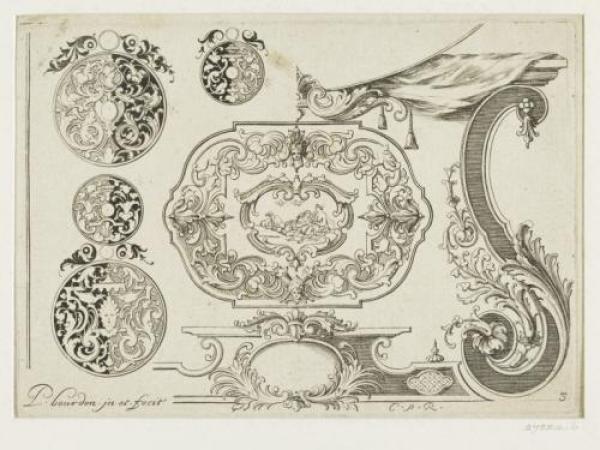
Guérard after Pierre Bourdon, plate from the Livre Premier: Essais de gravure par Pierre Bourdon. Paris, 1703. V&A :E.27324:6.
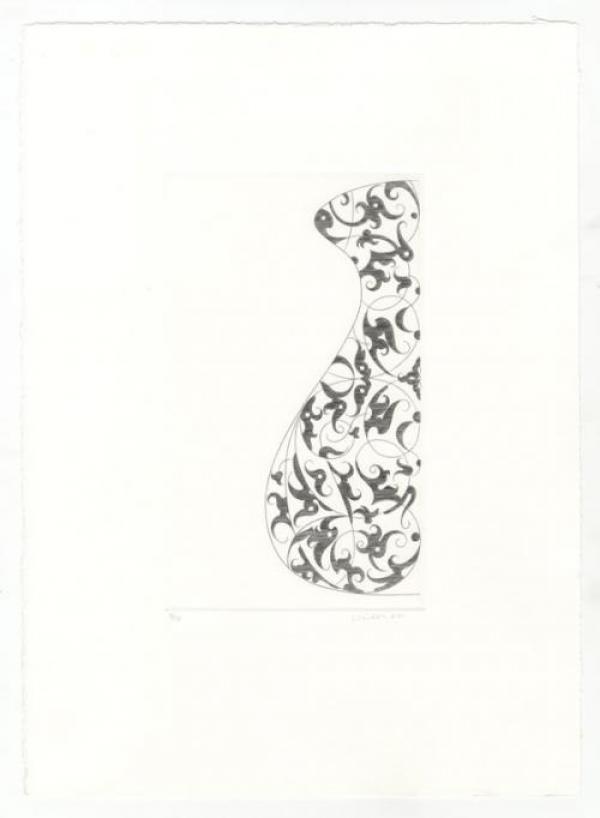
Anton Würth, O 2011 II S, engraving on wove paper, 2011. Anton Würth/C.G. Boerner, LLC
The above print of Würth’s is both reminiscent of 17th-century metalwork designs including the moresque forms of Thomas Picquot and earlier, blackwork patterns, such as that by Monogrammist A.D. below.
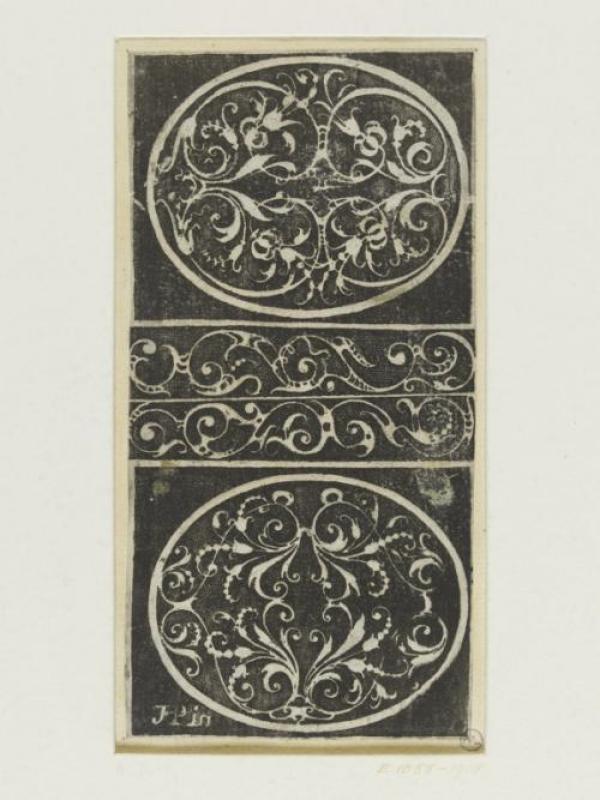
Thomas Picquot, plate from the Livre de Diverses Ordonnances de Feuillages Moresque. Paris, 1638. V&A:E.1058-1908
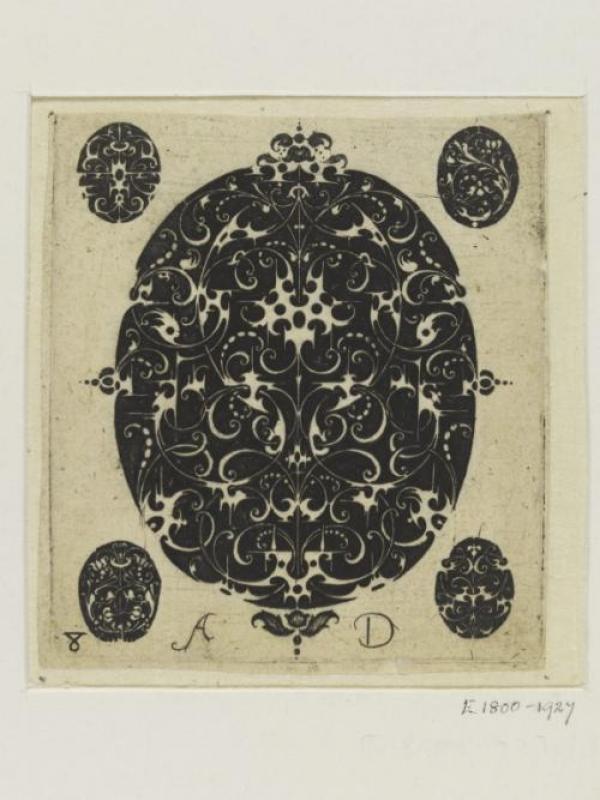
Mongrammist A.D., plate from a suite of designs for goldsmiths in the niello manner. French,c. 1608. V&A:E.1800-1927.
Where not the principal focus, ornament prints may also serve as a point of departure in a greater artistic vision. When he consulted the V&A’s collection of ornament prints, London-based artist, George Eksts, eschewed a conventional approach, drawn instead to the veritable idiosyncrasies he found in many of their compositions. Eksts has produced a considered and witty new body of work for his one-man show, ‘Infinials’, now on at the Tintype Gallery, in which two pieces make clever reference to the designs for armorial shields he studied:
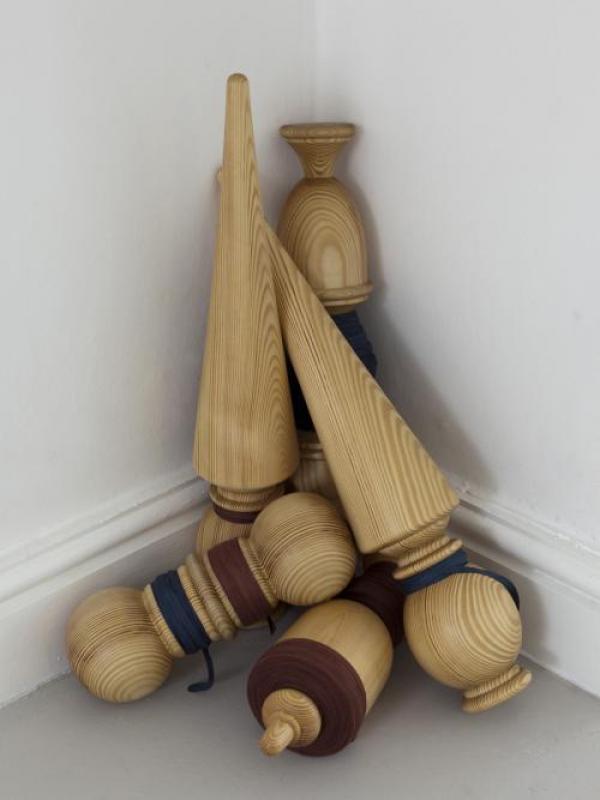
George Eksts, Finials, 5 hand-turned pine finials, hand-dyed ribbon. Dimensions variable, 2012. Image courtesy of George Eksts / Tintype Gallery

V&A: 29795
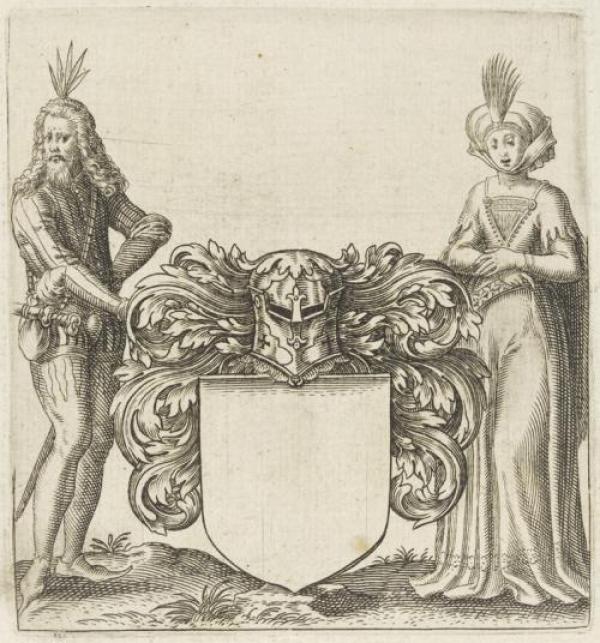
Johann Theodor de Bry, designs for armorial shields, from the suite Nobilitati et vulgo scitu etc./ Stam und Wapenbuchleinetc.Germany, 1592. V&A: 29795 & 25130:5.
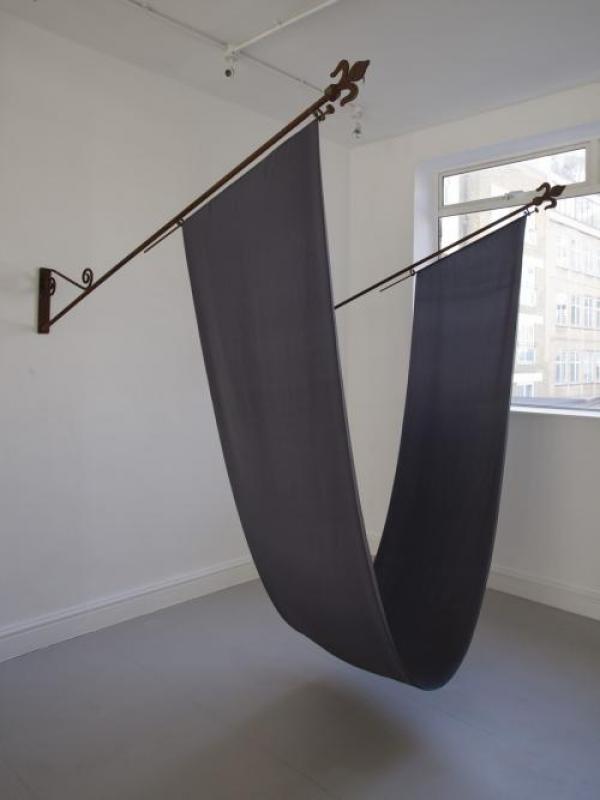
George Eksts, Three State Solution. Iron flagpoles, silk flag. 170 x 198 x 141cm. 2012. Image courtesy of George Eksts / Tintype Gallery.

Johann Theodor de Bry, design for an armorial shield, Germany, late 16th century. V&A:E.167-1889
Reflecting on this work, Eksts has said:
“It’s the sense of infinite potential allowed by this blank space in the centre of the print that interests me most, whether that potential is ever fulfilled or not. This could be a blind collaboration across space and time in which one artist completes the work of another, or remain forever incomplete. I’ve always been fascinated by placeholders, variables, lacunae, support structures, anything that is not an end in itself but suggests interchangeable and unknown possibilities. The grey silk of ‘Three State Solution’ seems to absorb colour and light from its surroundings, while the wooden ‘Finials’, lacking a fixed utility and repurposed as bobbins for the ribbon used in a wall-drawing, contain potential images of almost anything.”[4]
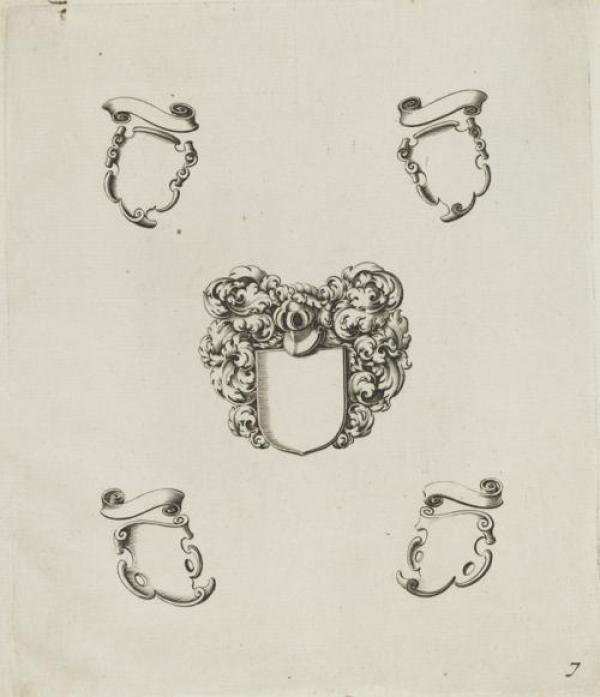
Johann Theodor de Bry, design for an armorial shield, Germany, late 16th century. V&A: E.1782-1927
[1]Gombrich paraphrasing a passage from Wölfflin’s Kunstgeschichtliche Grundbegriffe, in‚ Gombrich, E.H, ‘André Malraux and the Crisis of Expressionism’, The Burlington Magazine, 96(621), Dec., 1954: 374-378, p. 376.
[2]For a comprehensive discussion of this process and images of the resulting works see Lowe, A., ‘Messing About with Masterpieces: New Work by Giambattista Piranesi (1720-1778)’, Art in Print, 1(1), May-June 2011:13-23 De Lucchi, M. with Adam Lowe and the exhibition catalogue: Giuseppe Pavanello (ed.s), Le arti di Piranesi : architetto, incisore, antiquario, vedutista, designer, Venice: Marsilio, 2010.
[3]Hirsch, F. ‘Anton Würth’, Art in Print, 1(5), Jan-Feb 2012:43-44.
[4]Eksts, G., correspondence with author, London, 12 March 2012.